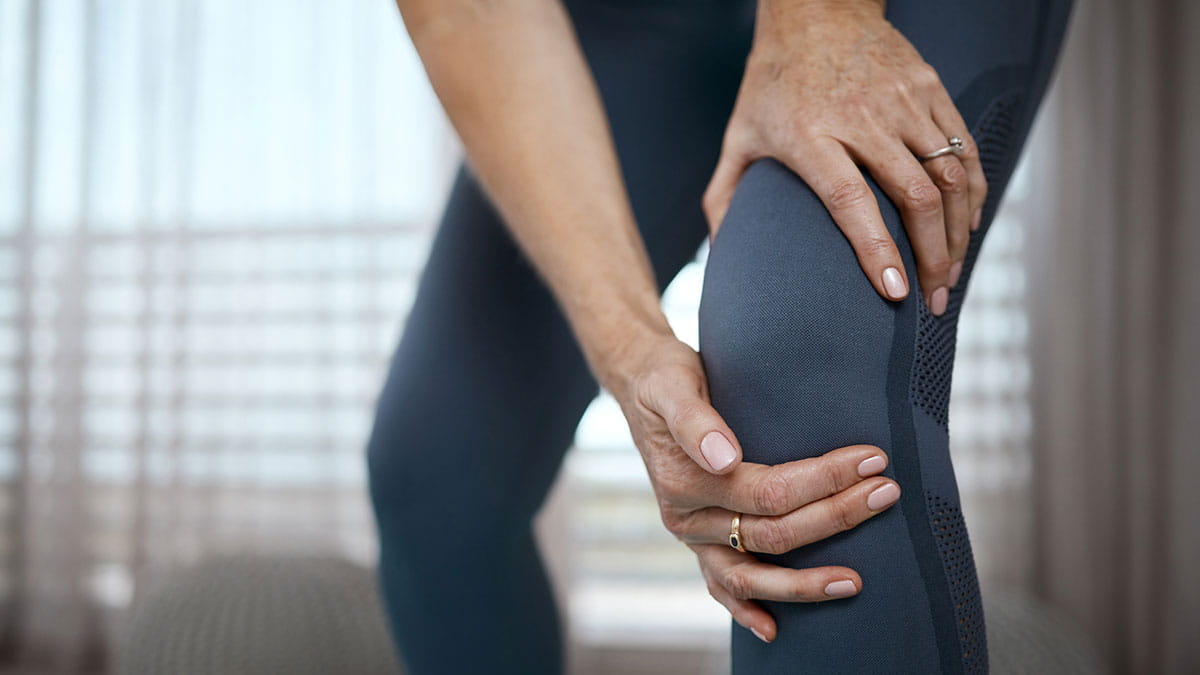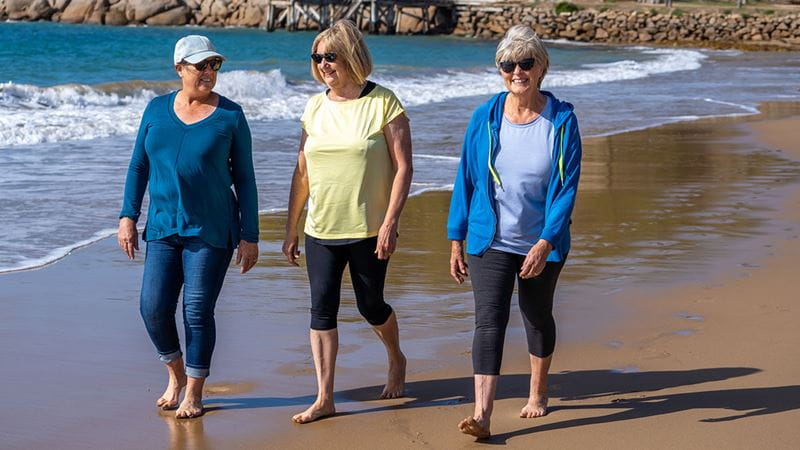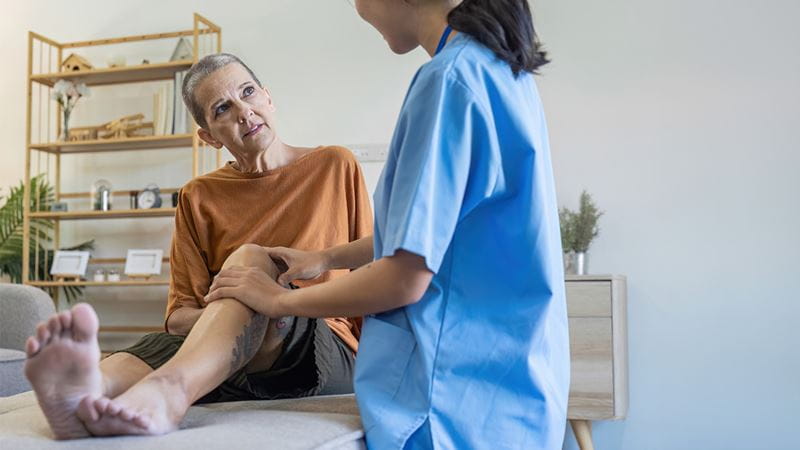Blog article
Knee arthroscopy: What to expect, what it costs, and when it’s the right option

Knee pain is common – and so is knee arthroscopy.
Often recommended to diagnose or treat issues like a torn meniscus or damaged cartilage, knee arthroscopy is a minimally invasive procedure widely performed across Australia. In this blog, we break down what knee arthroscopy involves, how much it costs, how long recovery might take, and when it’s most likely to be the right choice.
What is a knee arthroscopy?
A knee arthroscopy is a minimally invasive surgery. It involves inserting a small camera (arthroscope) and tiny surgical tools into the knee joint through a few small incisions. This allows the surgeon to see inside the joint and, if needed, treat certain issues at the same time.1
Knee arthroscopies are often used to:2,3
- Remove or repair a torn meniscus (cartilage)
- Trim damaged cartilage
- Remove loose fragments of bone or cartilage
- Investigate causes of knee pain or swelling
- Treat some ligament injuries (e.g. ACL reconstruction)
However, not all of these uses are recommended for people with osteoarthritis. In fact, current evidence shows that for people with osteoarthritis – particularly when there are no locking symptoms— knee arthroscopy may offer little benefit over exercise and non-surgical treatment.5 More on that later.
How long does a knee arthroscopy take?
A straightforward arthroscopy usually takes 30 to 45 minutes and is often performed as day surgery. This means you’ll be able to go home the same day – but you’ll need someone to drive you, as you’ll be recovering from the anaesthetic.1
Knee arthroscopy complications
Although knee arthroscopy is generally very safe, like any surgery, it does carry risks. General complications can include:1,2,3
- Bleeding
- Infection at the surgical site
- Blood clots in the leg or lungs (deep vein thrombosis or pulmonary embolism)
- Chest infections
- Difficulty passing urine
- Allergic reactions to medications or equipment.
Specific to knee arthroscopy, there’s also a risk of: 1,2,3
- Damage to the nerves around your knee
- Infection within the joint
- Bleeding into the joint
- Severe or ongoing pain
- Numbness
If you experience symptoms such as high fever, worsening pain, redness, unusual swelling, bad-smelling fluid from the incision sites, or numbness, it’s important to contact your doctor immediately.
Knee arthroscopy recovery
Although knee arthroscopy is a minimally invasive procedure, recovery still takes time. You may have some pain, swelling, stiffness or bruising in the days and weeks after surgery.
Most people:1,2,3
- Can walk independently within a few days (possibly with crutches for support)
- Return to light office-based work within 1-2 weeks
- Need up to 4-6 weeks off for physically demanding jobs
- Resume low-impact exercise like swimming or cycling in 4–6 weeks, with guidance from a physio
- Avoid high-impact sports for 2-3 months or until cleared by a healthcare professional
How long will I be off work after a knee arthroscopy?
Recovery time varies depending on your job and the type of procedure. Most people with desk-based roles can return to work within 1 to 2 weeks, while those in physical or manual jobs may need 4 to 6 weeks or longer.1,2,3 Always follow your surgeon’s advice to ensure an optimal recovery.
How soon can you exercise after knee arthroscopy?
Gentle movement is typically encouraged soon after surgery to reduce stiffness and improve circulation. Your surgeon or physio may recommend mobility exercises within the first few days, progressing to strengthening within the first couple of weeks. Most people can return to normal daily activities within 3 weeks, but it may take several months to fully resume high-impact exercise or sport. As always, it’s important to follow your healthcare provider’s advice.1,2,3
Knee arthroscopy cost in Australia
If you’re having your knee arthroscopy in a public hospital, it may be free or low-cost, depending on your eligibility for Medicare. Just be aware that wait times can be long, especially for non-urgent cases, and you won't be able to select your surgeon or hospital.
In the private system, the cost of a knee arthroscopy can vary depending on your cover, the provider, and where the procedure is done. According to government data, 80% of privately insured patients had an-out-of-pocket cost. Among these, the typical out-of-pocket cost was $600.4
These figures don’t include hospital fees, which may include accommodation, theatre, or medical devices, and are usually around $2,000 for a knee arthroscopy. Your private health insurer often covers most or all of this, but you may need to pay an excess or co-payment, depending on your level of cover.4
As an HBF member with eligible hospital cover, some or all of the cost may be covered. Log in to myHBF or call 133 423 to check your benefits. You can also find a participating provider using our online tool.
Is a knee arthroscopy right for me?
Knee arthroscopy can be effective for some conditions – particularly if you have a mechanical issue like a locked knee, loose body, or a known ligament injury.2
But for people with osteoarthritis, a knee arthroscopy isn’t always the best path forward. If there’s no persistent locking, a knee arthroscopy is often no more effective than non-surgical care5 and may significantly increase the risk of needing a knee replacement.6
Experiencing osteoarthritis? A knee arthroscopy may not be the answer.
If not an arthroscopy, how do I treat my osteoarthritis?
While there is no cure for osteoarthritis, management of the condition typically involves a combination of treatments aimed at reducing pain, improving joint function, and slowing the progression of the disease.
These include regular exercise; achieving and maintaining a healthy weight; special devices and footwear like walking aids, knee braces, and insoles; and pain relief options like heat packs, paracetamol, and non-steroidal anti-inflammatory medicines (NSAIDs).7 Remember to always talk to your doctor first, as NSAIDs can have side effects.
How can HBF help?
If you need a knee arthroscopy, HBF is here to help. Log in to myHBF or call 133 423 to check your level of cover and find a specialist using our Find a Provider tool.
The GLA:D® Program: Delivered in partnership with HBF Physio and other approved program providers, the GLA:D® Program is designed to reduce pain, improve strength and help eligible members move more confidently. Evidence has shown participants experience an average pain reduction of 33% after completing the program.8*
Osteoarthritis Healthy Weight for Life: Delivered in three phases, this 18-week program is designed to promote long-lasting behaviour change, supporting weight loss, increased mobility and better pain management for eligible members. You’ll be supported by a progressive dietary plan aimed at achieving sustainable weight loss and improved eating habits.**



